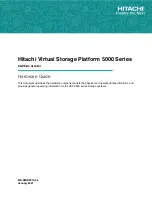
Document Number: 002-00886 Rev. *B
S29GL01GP
S29GL512P
S29GL256P
S29GL128P
7.8.5
DQ5: Exceeded Timing Limits
DQ5 indicates whether the program or erase time has exceeded a specified internal pulse count limit. Under these conditions DQ5
produces a “1,” indicating that the program or erase cycle was not successfully completed. The device does not output a 1 on DQ5 if
the system tries to program a 1 to a location that was previously programmed to 0. Only an erase operation can change a 0 back to
a 1. Under this condition, the device ignores the bit that was incorrectly instructed to be programmed from a 0 to a 1, while any other
bits that were correctly requested to be changed from 1 to 0 are programmed. Attempting to program a 0 to a 1 is masked during the
programming operation. Under valid DQ5 conditions, the system must write the reset command to return to the read mode (or to the
erase-suspend-read mode if a sector was previously in the erase-suspend-program mode).
7.8.6
DQ3: Sector Erase Timeout State Indicator
After writing a sector erase command sequence, the system may read DQ3 to determine whether or not erasure has begun. (The
sector erase timer does not apply to the chip erase command.) If additional sectors are selected for erasure, the entire time-out also
applies after each additional sector erase command. When the time-out period is complete, DQ3 switches from a “0” to a “1.” If the
time between additional sector erase commands from the system can be assumed to be less than t
SEA
, then the system need not
monitor DQ3. See
After the sector erase command is written, the system should read the status of DQ7 (Data# Polling) or DQ6 (Toggle Bit I) to ensure
that the device has accepted the command sequence, and then read DQ3. If DQ3 is “1,” the Embedded Erase algorithm has begun;
all further commands (except Erase Suspend) are ignored until the erase operation is complete. If DQ3 is “0,” the device accepts
additional sector erase commands. To ensure the command has been accepted, the system software should check the status of
DQ3 prior to and following each sub-sequent sector erase command. If DQ3 is high on the second status check, the last command
might not have been accepted.
shows the status of DQ3 relative to the other status bits.
7.8.7
DQ1: Write to Buffer Abort
DQ1 indicates whether a Write to Buffer operation was aborted. Under these conditions DQ1 produces a “1”. The system must issue
the “Write to Buffer Abort Reset” command sequence to return the device to reading array data. See
















































